When Melissa wrote in about her pastry cream crisis, I felt her pain. I had just had the same experience: Hours before 25 guests were to arrive at my house for a pie social, I awoke to find that the lovely pastry cream that had set up so nicely in the refrigerator at bedtime had turned into a pourable custard.
This meant that instead of enjoying nicely formed slices of honey-vanilla pie with gingersnap crust, my guests were about to face a custard flood when they tried to cut themselves a slice of pie. Aarrrgh! What to do?
Unable to reach my pastry-school-graduate friend in California for a quick crisis consultation, I took to desperate improvisation. First, I dumped the whole batch back into the saucepan, and turned up a medium flame under it, because I knew I would at least have to try re-cooking it. I held back two half-cupfuls of the cream, though, putting each in a separate “rescue” bowl.
I made a cornstarch-and-water slurry and stirred it into one of the rescue bowls. Turning to the other, I sprinkled a half-teaspoon or so of powdered gelatin over the surface of the pastry cream and let it soften for about 10 minutes.
By now, the main saucepan of troubled pastry cream was heating up. I reintroduced both rescue batches–with their hopeful ingredients of cornstarch and gelatin–into the main batch, and kept stirring (and praying) as the heat rose and the time for my company’s arrival drew nearer.
Whatever transgressions I have committed in my life were somehow overlooked by the Pastry Gods on that day: the cream started emitting steam, and gave off that nice thick blurp that it’s supposed to when it wants to show you that it’s done. I poured it through a sieve into a clean bowl and pressed plastic wrap onto the surface.
I put it in the fridge, and after a few hours–we’re talking less than an hour before my guests were due–it showed itself to be creamy and firm enough to hold its shape when sliced. I would have burst into tears of gratitude, but I was waaayyy too busy getting myself and my dining room ready. The honey-vanilla filling went into the gingersnap crust, received an artful drizzle of honey on top, and my crisis was defused. (You can understand now why this pie social has not one single photo to document it; panic–and then relief–trumped picture-taking. Sorry.)
So what the hell happened to make my pastry cream turn from a full-bodied object of love into an embarrassing, runny mess? I wish I could tell you that I had an answer.
The run-up to making the filling had been marked by slightly obsessive recipe comparison. I kid you not: I even made a chart, for crying out loud, of a half-dozen or so chefs’ pastry cream recipes so I could quickly compare how much of the key ingredients each uses.
I checked the recipe of piemaker extraordinaire Ron Silver, who owns Bubby’s in New York City; I consulted the recipe in baking guru Rose Levy Beranbaum’s Pie and Pastry Bible; I reviewed Chef Claude Perdriolat’s recipe from my pastry techniques class at L’Academie de Cuisine, and I studied the formula from the Tartine Bakery’s cookbook, which I worship, since that San Francisco shrine makes some of the most breathtaking desserts I’ve ever had. I also checked the recipe in my Williams Sonoma Baking Essentials cookbook.
My little chart showed some intriguing variations among the very few ingredients needed for pastry cream (milk, eggs, cornstarch and sugar, with a little salt and vanilla).
All the recipes fell in the same range for milk: right around 2 cups. Some used half-and-half, or a combination of cream and half-and-half, or just plain whole milk. But for the dairy component, we’re talking 2 cups.
Sugar varied: most recipes called for a half-cup, though Chef Claude tilted sweet, with a full cup of sugar.
Eggs varied a bit, too: most recipes used just yolks–4-6 yolks. Rose used two whole eggs, and Tartine gave us a choice of 2 whole eggs or 4 yolks.
The cornstarch amounts ranged from 3 Tbsp. to 5 Tbsp.
And the technique was always the same: As your dairy heats in a saucepan over medium-high heat, whisk the yolks or eggs together in a bowl until they are light. (Some chefs like to put a bit of the sugar into the milk; Some keep it all for the egg mixture.) As the milk gives off steam, slowly drizzle some (or all) of it into the egg-sugar mixture, whisking constantly to keep the eggs from cooking.
When the hot milk has tempered the eggs, pour the egg-sugar mixture back into the saucepan with the rest of the milk and cook the mixture over medium-high heat until it thickens and reaches that just-boiling stage where it gives off a thick blurp. Cook it just a minute or two more, checking that the cornstarchy taste is gone and the cream starts to look shiny. It should be very thick.
Pour the pastry cream through a sieve into a clean bowl. Some chefs stir in some unsalted butter here; some don’t. But they all then put a sheet of plastic wrap directly onto the surface of the pastry cream and chill it.
And all of them, except me, I’m presuming, get a nice, thick, rich custard that holds its shape. Just look at this fetching photo from respected pastry blogger BrownEyedBaker (and her accompanying recipe for banana cupcakes with pastry cream is worth a look, too).
So which recipe did I use when I experienced my spectacular pastry-cream failure? It was Tartine’s recipe. Which is why I know for a fact that it wasn’t the ingredients, but something I did with them, that went wrong.
Tartine’s calls for 2 cups of whole milk, 1/4 teaspoon of salt and a split vanilla bean, with its seeds, in a saucepan over medium-high heat. In a bowl, whisk together 3 tablespoons of cornstarch (4 if you want it firmer, such as for a cream pie filling) and 1/2 cup sugar. Whisk 2 whole eggs (or 4 yolks if you like a richer pastry cream) into the sugar and cornstarch.
When the milk verges on boiling, remove the vanilla bean and drizzle about one-third of the liquid into the egg mixture, whisking constantly. Pour the tempered eggs back into the milk mixture in the saucepan and cook over medium heat, whisking as it thickens. You want to bring the cream barely to a boil, so it emits “a few slow bubbles,” as Tartine pastry chef Elisabeth Prueitt says, but you have to be careful not to let the cream boil vigorously or you could curdle it. It should be the thickness of lightly whipped cream, she writes.
Pour the pastry cream through a sieve into a clean bowl. Prueitt calls for the addition of 4 tablespoons of unsalted butter, cut into 1-tablespoon-size pieces, and mixed in one at a time, when each is thoroughly incorporated. Then plastic wrap is pressed onto the surface of the cream and it is chilled.
I don’t know where exactly I went wrong in this process; I did not use the butter at the end, but neither does Chef Claude when he makes his pastry cream, and it comes out quite firm. So firm, in fact, that I opted for Tartine’s recipe because I wanted my pie filling to be a tad softer than Chef Claude’s pastry cream (his uses 2 c. milk and 4 yolks, but ups the cornstarch to 5 Tbsp.).
I did, however, substitute honey for some of the sugar, according to one recipe I found in my searching. A-ha, you might yell, that is where you went wrong! But no, it’s not. Because I have made other pastry cream recipes–pure, without honey–and run into this same runniness problem. And I have made them and had the cream stay just right.
Not a satisfying post, I know; I still toss and turn about this at night. But in the spirit of full disclosure and collaborative problem-solving, CurvyMama wants to get it all out there and see if anyone has suggestions.
The pastry cream challenge commences!
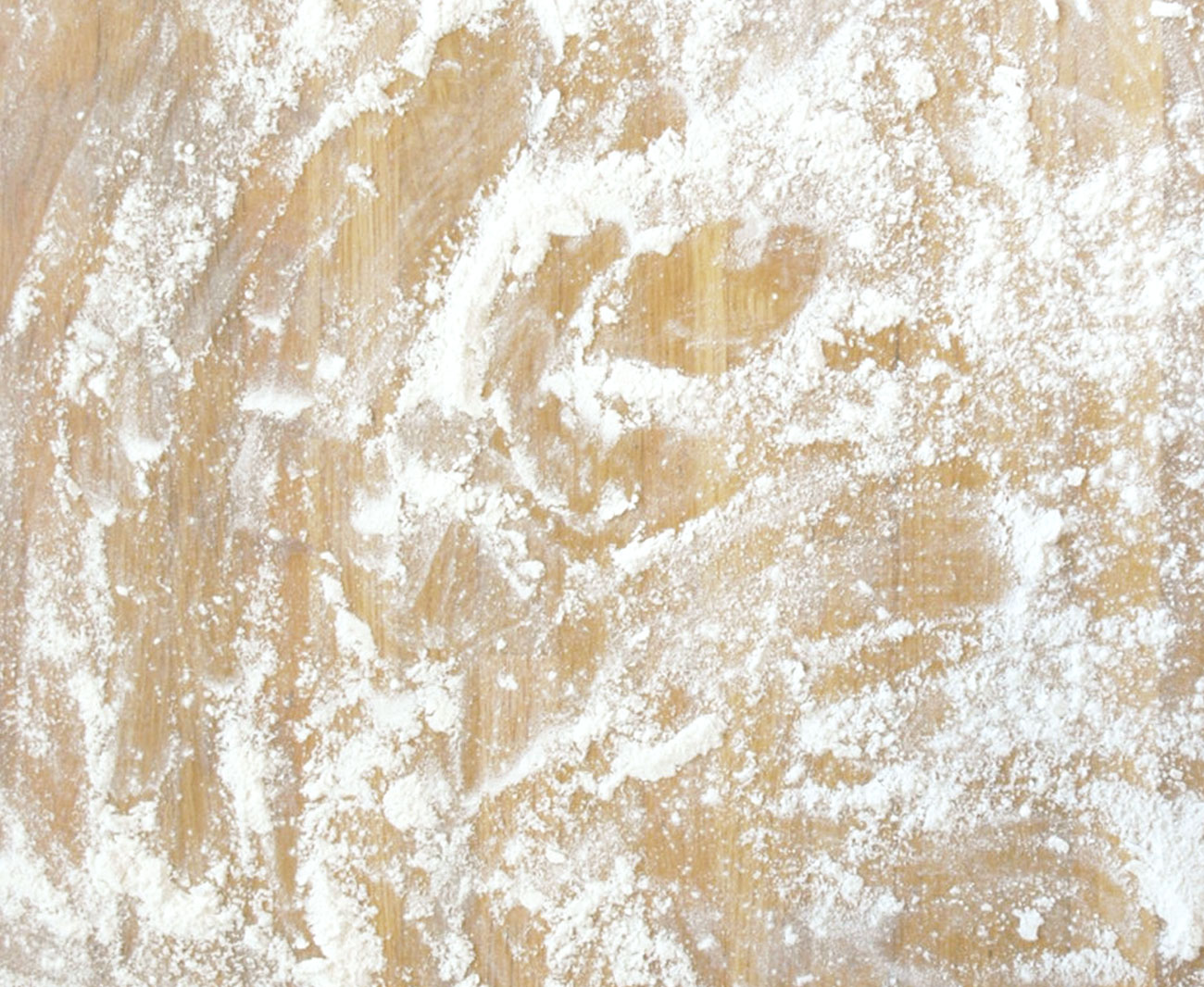
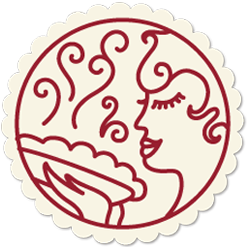
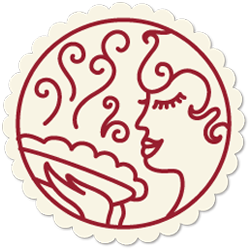

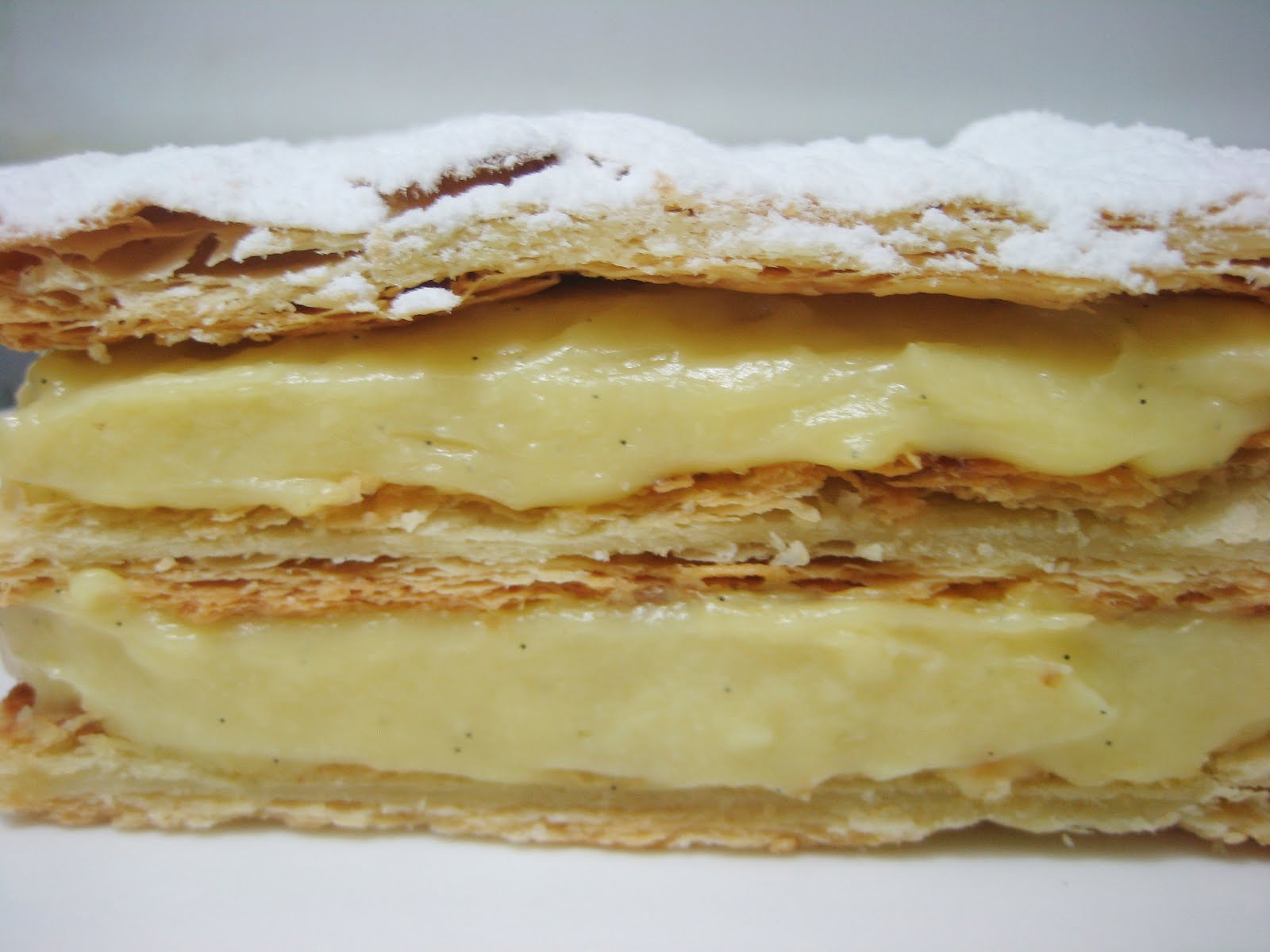
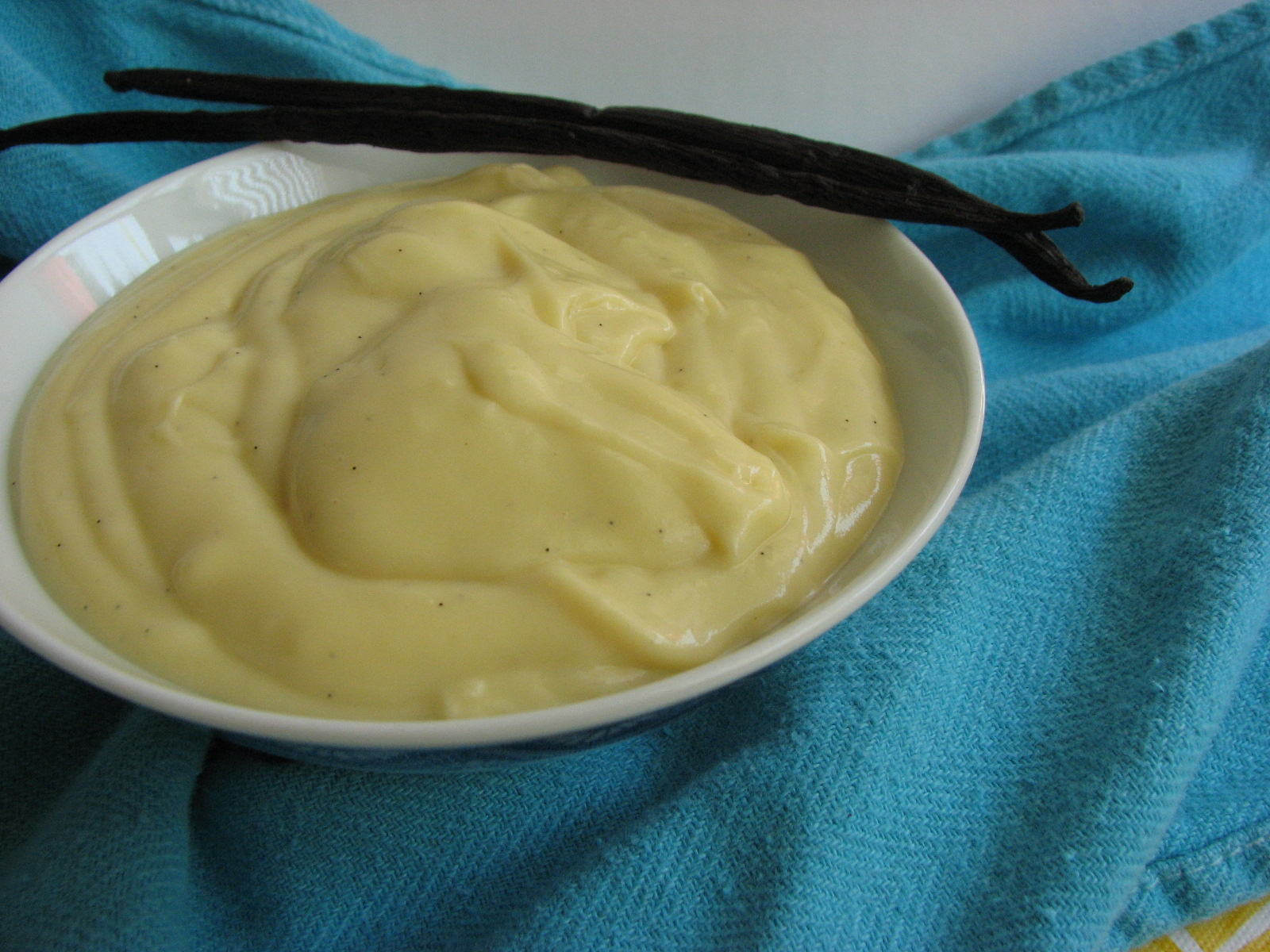
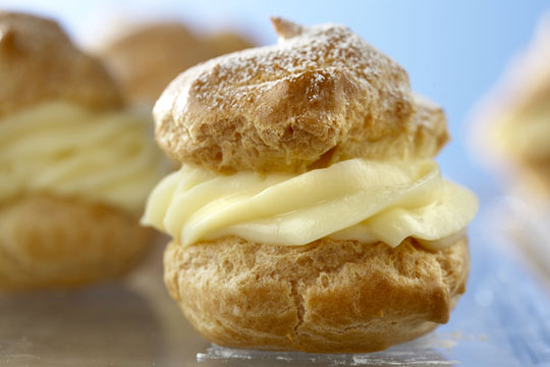
OK. I’m going to have to make a batch of pastry cream and watch myself very closely to see what happens. I’m guessing that you need to lean toward the larger amount of cornstarch and stick to using all yolks and no whites. I should probably do a comparison. Stay tuned.
A-ha! My “California pastry-school-graduate” friend! Hi, honey! We would all love to know the results of your comparison. Maybe you can take photos of the results, too, and write a few paragraphs and we will post it as a guest post? I never stopped to think about the egg whites… it works for Elisabeth Prueitt! 🙂 Thanks, Leender, for chiming in. We look forward to your experiment! –me
Thanks for this post CurvyMama! After reading your post, and re-reading the recipe for the pastry cream that gave me so much trouble, it seems Bon Appetit’s liquid ratio was way higher (2 3/4 cups milk and half-and-half to 1/2 c. sugar, 3 tbsp. cornstarch, 5 egg yolks, 1/2 stick butter, and 2 tbsp. flour + salt and vanilla). Although their recipe seems odd, I also feel looking back that if I had cooked the pastry cream a little longer, it would have thickened at least a little more. In the end, re-cooking it and adding a mix of cornstarch and milk helped me to save it. I think getting that “blurp” is pretty important.
Thanks for this post and sharing your experience and research. You have inspired me to try pastry cream again, and take on my Grandmother’s Coconut Cream pie. I have a recipe, but like most of the recipes she left us, it is only “mostly complete”, so it will require some trial-and-error.I will let you know how it turns out.
Thanks again!!
Great, Melissa, let us know how it goes!! And I so admire your passion for both sides of the kitchen; taking the savory version of L’Academie’s pastry techniques class as well as plunging into the details of sweet-side stuff like pastry cream! Wow! See you in L’Academie’s adjoining kitchens on Monday night. -catherine
You know what else is weird about that recipe, Melissa? The flour. I have never seen a pastry cream recipe that includes flour. Very odd.
Julia Child’s recipe for pastry cream calls for flour…a 1/2 cup of it. It makes a nice thick pastry cream, but in the end had the same problem with it becoming runny after an hour. I’m wondering what the issue is…
I noticed it said “Honey Vanilla Pie”? There is an enzyme in honey called amylase that will break down cornstarch. You have to use modified food starch to resist the effects of amylase. I ended up here because of a honey pastry cream I made for napoleons which broke down over night int he fridge into a soup. I found that egg yolks contain this enzyme and if the pastry cream is not heated to 185F to kill the enzyme then the cream will break down. One thing lead to another, and I discovered that all honey contains this enzyme too. Maybe heat the honey to 185F first?
This is fabulous information, James! I had never heard that about the enzyme in honey. And that would explain a lot about what I experienced! Thank you for this tip!
I’m making a banana cream pie for a friend who needs comforting. It’s been years, but my original recipe has disappeared. That was made with cornstarch only and egg yolks. I remember having a problem with the banana slices weeping unless I was careful to put a layer of cream under and filling in all the space around the slices. Still sometimes the filling would soften and flood.
So I decided to change things up and I compared a number of top rated recipes on the web. This was the first time I added in an equal amount of flour as cornstarch. Now it’s thickened well, but has a slight after-taste of flour. I haven’t time to redo – so it’s chilling and I’m going to strain and fold in some whipped cream that I hope will mask it (the friend isn’t likely to notice – but it’s the last time I’ll make with flour. I wonder if 1:2 ratio would work better…).
Did you ever discover if the enzyme was at fault, or something else? Otherwise I think I’ll try comparison batches (carefully timed and temped) until I find a “perfect” version for everything. The gelatin idea is intriguing.
How nice of you to make a pie to comfort a friend. I hope it turns out well. The best trick I have found with banana cream pie is to make the custard and the crust and put it together 15 to 30 minutes before serving it. That way no part of the feeling weeps or get soggy.
Cook’s Illustrated says that the pastry cream needs to reach 200 degrees to destroy the amylase in the egg yolks used to thicken the pastry cream. If honey also has amylase in it, I’d add it to the cream at the beginning so it reaches 200 degrees, too.
Thank you for sharing that! Good to know!
my pastry cream didn’t set left it in fridge overnight. what I think I did wrong was not bring to a boil recipe said stir until it starts to bubble
Yes, pastry cream can be finicky! The trick is to bring it to a boil, then turn the heat down immediately so that it barely simmers. Keep it like that for 2 to 3 minutes, then take if off the heat. Sitting overnight in the fridge, with a sheet of plastic wrap right on the surface of the custard, should set it up nicely! I hope this helps!
OMG!! I had the same thing happen to me. Here i was, my first time making it and I was happy dancing. When morning came i couldnt wait to pull out the beautiful silky gorgeous thick yet creamy, goodness in the bowl. To find soup. WHY????HOW????WHAT HAPPENED????WHERE DID I GO WRONG???? just like you. I went and cross referenced the recipe to see what works for people and what doesnt. (Hence how ended up here).. I was making a banana creme pie..Well attempting too.
Now after the pastry creme was completely cooled. It was thick and wonderful. I folded in whipped banana puree…and it was still so thick and so yummy… i never thought about reheating it.
I was going to make my pie crust out of the nella cookies. So instead. I broke up half the cookies and left some whole and folded them in.i mean, People make flavoured pastry cream and all sorts. I wonder .though. Cause I added the butter. So maybe people alter the thickener and omit the butter depending on what kind or type they are making? I also used tapioca starch
instead of cornstarch. So Im going to make it again tommorrow. Im going to use a Combo of cream and half and half. 5 yolks plus 1whole egg and 5 tblsp of tapioca starch and we shall see. Im glad it worked out for you. Mine wasnt a total loss by any means. Im happy to try again. If I end up making more of the Yummiest southern banana pudding ever. Then i guess Ill just have to suffer..lol
Hi! Amylase I believe is your culprit. My creme pat set up like rubber, so I had a different problem, but I ran across this explanation (pasted below) that may help you get some sleep. From Cooks Illustrated:
… pastry cream must be heated to a temperature high enough to destroy the amylase enzyme present in egg yolks, which would otherwise break down the starch and make the pastry cream runny.
So I’m assuming your creme pât came out lovely but still had some active amylase which then did its thing while you were away. – Chris